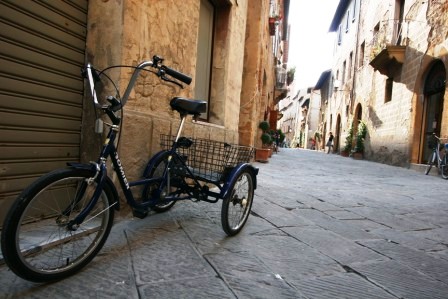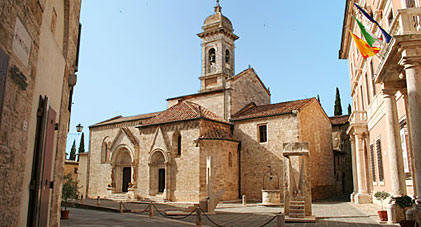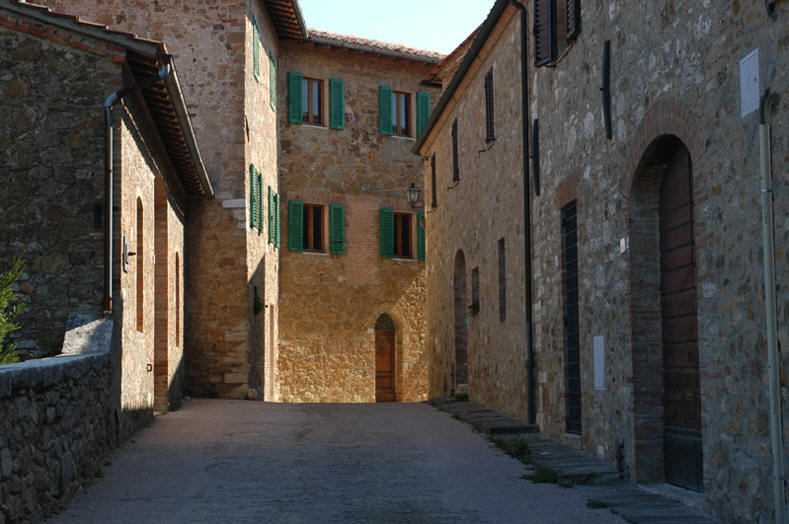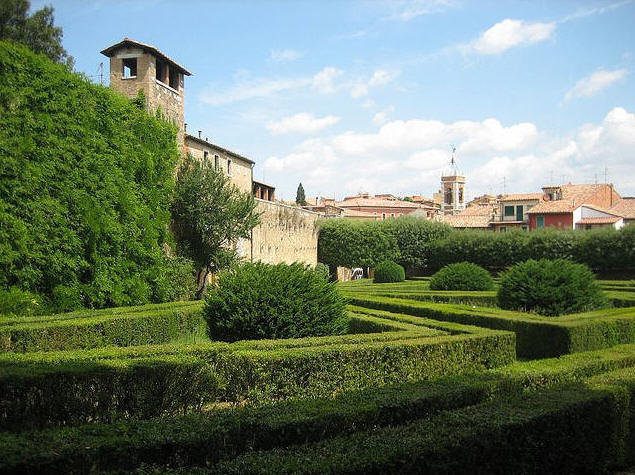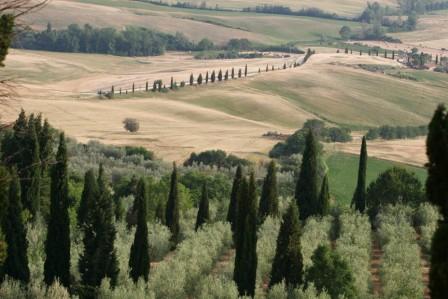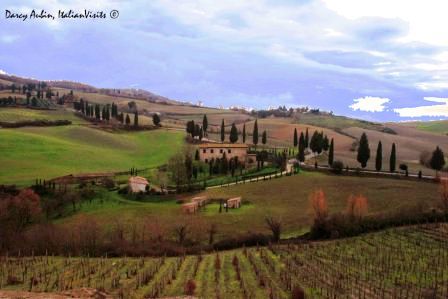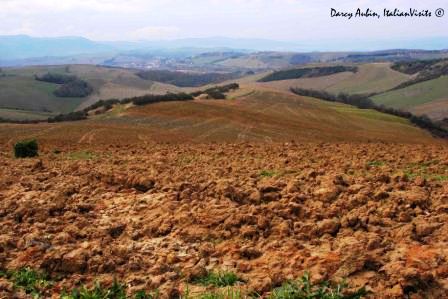Welcome to San Quirico d'Orcia
Population: 2,526 (2004)
Region:
Tuscany
Map: San
Quirico d'Orcia
Wikipedia:
San Quirico d'Orcia
Official website
Named in honour of Saint
Quiricus, the walled town of San
Quirico d'Orcia is situated on
the northern edge of the broad
Val'Dorcia about 35 kilometers
south of Siena and about 80
kilometers south of Florence.
The town grew on the site of a
very ancient hamlet called
Osenna, which had its own
founding in Etruscan times.
The Val d'Orcia is a unique
landscape - broader and more
chalky than the clay landscapes
of the Sienese Crete to the
north and east with undulating,
often cone-shaped hills. The
dominant colour is grey-green,
with patches of brown fields
that together set of the
vertical spokes of cypress trees
that line the roadways and farm
drives. The landscape was
as much loved by the Renaissance
painters of Siena as it is to
shutter bugs today.
The town, with a population of
just over 2500, is one of the
prettiest and most amiable of
the ancient towns in southern
Tuscany and well worth a visit.
It is close to Montepulciano,
Pienza and Montalcino and can be
(and should be) easily included
with them when traveling in the
area. Other villages in
the area are San Giovanni d'Asso
and Castiglione d'Orcia.
San Quirico is situated on one
of the main pilgrim routes of
the middle ages, the
Via Francigena, which
connected Canterbury in England
to Rome, passing through France.
A stroll through the town makes
for a very pleasant time in and
of itself, but as you progress
down the well swept and clean
medieval streets you will
encounter at one end the
Collegiate Church of San Quirico
and an Italian garden, the Horti
Leoni, at the other.
The Collegiate Church (full name
- Collegiata dei Santi
Quirico e Giulitta) had its
beginnings in the 8th century as
humble church for local people -
a pleban church as it is called
- but it was completely rebuilt
in the 12th century on the Latin
Cross plan with nave and side
chapels, and a choir was added
in 1663. Most of the
interior decoration that one
sees today dates to the 17th
century. The Campanile -
or bell tower that sits stolidly
beside the main structure - was
restored between 1796 and 1806.
Other churches in San Quirico
include the Romanesque church of
San Biagio a Vignoni, the Church
of Santa Maria Assunta (late
11th century), the Church of San
Giovanni Battista, at Bagno
Vignoni and the Church of
Madonna di Vitaleta, housing a
"Madonna" attributed to Andrea
della Robbia.
Those with an interest in
architecture can also stop by
the Palazzo Pretorio (town hall)
and Palazzo Chigi, a massive
structure built in the mid 17th
century by Cardinal Flavio Chigi.
It suffered bomb damage during
Word War II and has never been
properly restored. The
Giardino delle Rose (rose
garden) and the centuries-old
Scala hospital each hold their
own fascinations.
The Horti Leonini, named for its
designer Diomedi Leoni, at the
opposite end of the town was
started around 1540) and is a
superb example of an Italian
garden, although it does feel a
bit frayed and down at heels at
the moment. From time to
time it is used to display
contemporary sculpture, some of
which have not escaped and
remain on permanent display.
Hidden in the woods on the slope
facing in the garden is an
ancient well now full of
detritus of all descriptions.
Because San Quirico d'Orcia
is off the beaten path - the
main rail line and the
autostrada between Rome and
Florence passes to the east
the area is not crawling
with tourists. The
area is, therefore, a mecca
for bicyclists and hikers,
as well as those who are
content to drive a car while
seeking out interesting,
picturesque, historical
towns like this.
|
|
Region of Tuscany |
|
43°4′N 11°36′E |
|
|
|

Coat of Arms |
|
Directions |
|
San Quirico d'Orcia
is very
easy to reach,
following either the
A1 (Rome-Milan
central highway) and
exiting at Pienza.
Follow signs to
Pienza and keep
going. There
are numerous
indications for San
Quirico along the
way. |
|
 |
|
Looking for a place
on in San Quirico
d'Orcia or the Orcia
Valley (Val D'Orcia)?
Check out our great
selection of villas,
apartments and
charming hotels in
the area. Visit
our selction of
accommodations in
South East Tuscany.
If you could ask an
expert why wouldn't
you? Contact us
today, for the best
places to stay in
the beautiful Val
D'Orcia.
|
|
 |
|
|
|
 |
|

